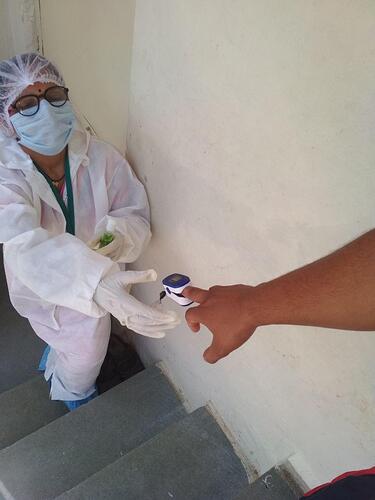Today few municipal people came to my place to check the oxygen level of people aged above 40 with a device known as an oximeter.
Then I searched and read about it. I have understood a few things which is something that we actually know since school, just need to join the dots!
Revisiting the Basics
Let’s start with our respiratory system.
We inhale air which gets transported to our lungs. This air reaches alveoli which are tiny air chambers (one cell thick). A network of blood capillaries surrounds the walls of the alveolus. Gaseous diffusion takes place and oxygen is carried by RBCs in the form of oxyhemoglobin. This is taken to each tissue and then to each cell where it is utilized to produce energy. The carbon dioxide formed in the process is transported to lungs in the form of either bicarbonate or as carbaminohemoglobin which is then released as carbon dioxide during exhalation.
Hypoxia and Asphyxia
Hypoxia is caused when there is a deficiency of oxygen, whereas, asphyxiation is caused by the accumulation of carbon dioxide along with a diminished supply of oxygen.
Hypoxia and corona
How is corona affecting the biological system?
It messes with this respiratory system wherein the body experiences hypoxia leading to further complications
Early detection of hypoxia with Oximeter
An oximeter is a small device based on the principles of spectroscopy which looks like a stapler. A finger is to be placed inside and light is passed through the fingertip. Oxygenated blood absorbs some light and the rest is transmitted to the detector in the device. We can back-calculate the amount that has been absorbed and correlate with oxygen saturation in the blood.
Knowing the level of oxygenated blood provides an early assessment of whether the person’s oxygen level in the body is dropping enabling doctors to take early measures before condition worsens.
Prevention is better than cure
- Maintain hygiene
- Social distance is the key
- Watch your breath
- Be aware about hypoxia which could prevent further complications
- Maintain a positive mindset
- Don’t panic, but be careful
- Take care

